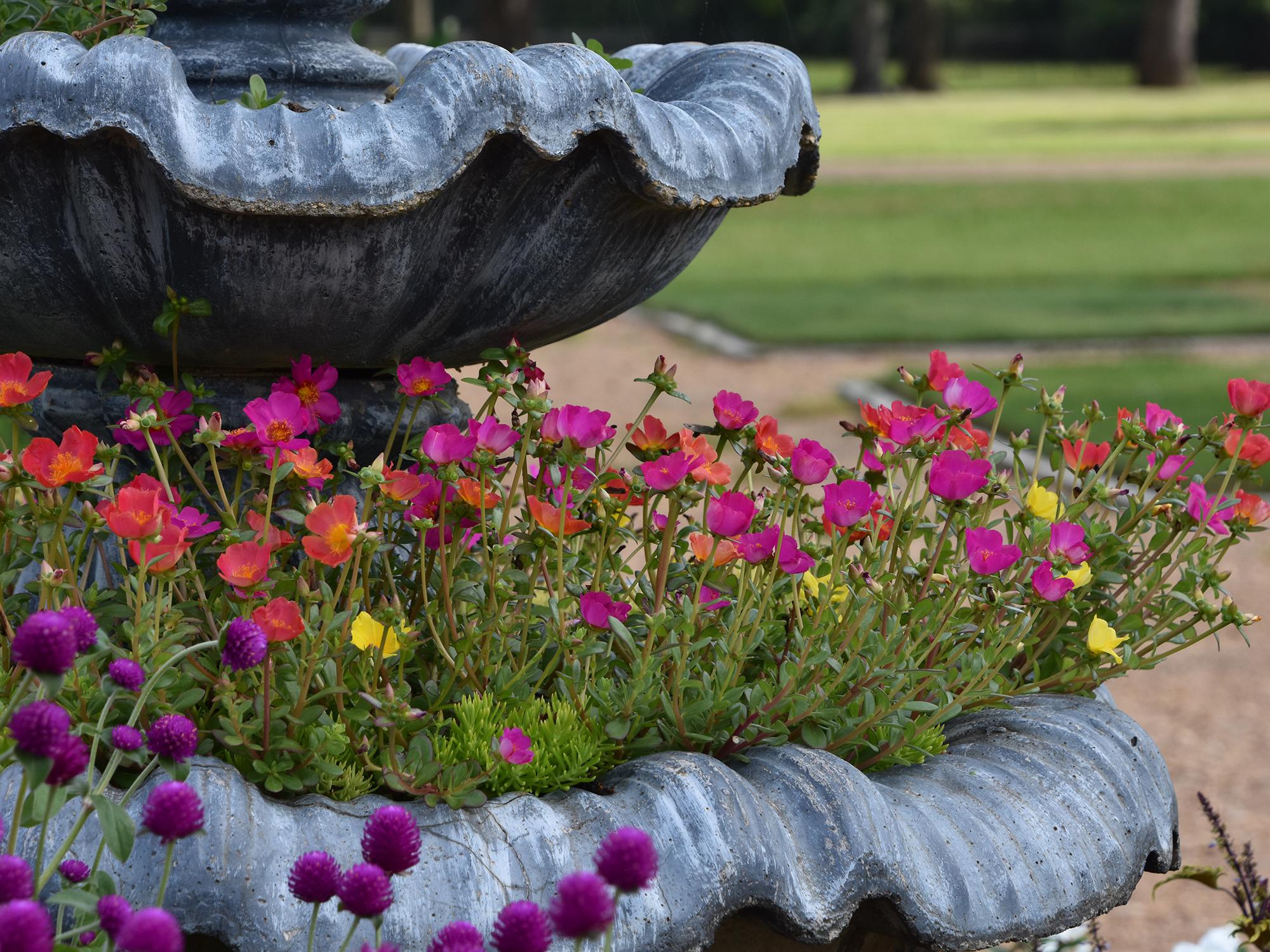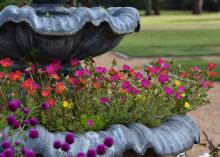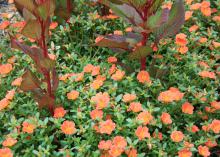Information Possibly Outdated
The information presented on this page was originally released on July 24, 2017. It may not be outdated, but please search our site for more current information. If you plan to quote or reference this information in a publication, please check with the Extension specialist or author before proceeding.
Old purslane has new value in summer heat
Purslane has long been regarded as a garden weed, and it's no wonder: A single plant can produce more than 50,000 seeds. I've seen purslane growing in coarse gravel and cracks in concrete. If the area is moist, you can find purslane, and I have removed many as weeds.
But I’m having a change of heart. Purslane is one of the older plants I'm interested in adding back to my coastal Mississippi landscape and garden. It's a succulent that thrives in high summer temperatures, and that makes it a perfect flowering annual for our hot and humid summers.
Purslane's summer-loving qualities make the improved selections perfect for the landscape.
Purslane is a larger and more robust version of its relative, moss rose, a popular bedding plant. Here’s how to tell the difference: Moss rose has leaves that are cylindrical-shaped, and purslane has flattened, teardrop-shaped foliage.
Some of the better-flowering purslanes -- and there are many to choose from -- include the colors rose, scarlet, apricot, orange, yellow and white. They have a tropical look and put on a show with flowers up to 2 inches wide. The bright-yellow stamens are fairly long and move with the gentlest touch, adding more interest.
Purslanes are generally low-growing and spreading flowering annual plants. The stems are purplish-green, and the leaves are bright green. They grow up to 8 inches tall and spread to 18 inches, so space them 12 to 15 inches apart in the landscape.
One of my favorite ways to grow purslane is in patio containers and hanging baskets. These choices take advantage of the plant’s spreading and trailing growth characteristics. Be sure to keep containers a little on the dry side.
Regularly pinch off long stems and spent blooms to keep purslanes dense and full. Purslanes are heavy feeders that require adequate nutrition throughout the season for best flowering and growth.
It is important to allow the soil to dry out moderately between watering. I water with a water-soluble 20-10-20 or 20-20-20 fertilizer, always following label instructions. As temperatures begin to drop in the fall, keep the soil a little dry, and the plant will reward you with blooms into the fall.
In addition to liking the summer heat and humidity, purslane likes full sun. I find it fascinating that the flowers close in late afternoon and early evening, as well on cloudy days and when the plant is under stress.
An interesting fact is that purslane is considered a culinary herb in many parts of the world. The leaves of this plant are rich in iron and can be eaten raw when young. I’m even growing purslane as microgreens and adding this super food into my diet.
When it gets older, purslane can be cooked with other leafy vegetables like spinach. It is commonly found in Italian, Greek, Central American and Middle Eastern cuisines.
Purslane is a beautiful, old plant with many uses that is worth trying in every Mississippi landscape today.






